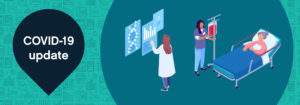‘Social determinants of health’ has been a common phrase for decades now, but the term social risk is much less popularized. So, what does it mean and is it all that different from SDOH? Most importantly, what should healthcare leaders understand about social risk? Read on to find out.
What is social risk?
Social risk describes an individual’s susceptibility to adverse social conditions that are directly tied to health outcomes. These conditions include housing instability, food insecurity, lack of transportation access, limited digital connectedness and low health literacy rates.
How is social risk different from social determinants of health?
Social determinants of health are the systems within which we all exist. These systems include social norms and powers, political and developmental agendas, and economic conditions and patterns. Social determinants of health are broad forces impacting everyone, while social risk is an interaction of specific individual factors.
How does understanding social risk benefit health systems and health plans?
Understanding social risk benefits health systems and health plans by offering critical insight into the severity and chronicity of social adversity that each individual is facing—and how that is shaping their health outcomes. Historically, payers and providers have not had visibility into this information.
Providers typically have patient records with very basic demographic data (e.g., name, date of birth, sex, race and/or ethnicity) and an inevitably incomplete medical history. If patients are insured, they also have member or beneficiary records where payers or government organizations store claims details and other coverage-related information. These patient and member/beneficiary records have typically acted as a Venn diagram with minimal overlap, as payers and providers have both been reluctant to share more information than they must.
When health plans and health systems are willing to embrace interoperability and incorporate social risk data, they can gain a 360-degree view of an individual’s wellbeing, strategically address unmet needs, and meaningfully impact health outcomes.
Why is social risk data extra salient for Medicare Advantage plans?
Social risk data can be even more powerful for Medicare Advantage plans, as they often have little to no insight into their beneficiaries’ claim history, morbidity risk, health behaviors, etc. Even in the absence of all that information, knowing an individual’s social risk can be enough to identify and stratify their needs, distribute situation-specific resources, and steer them to the right interventions for their unique profile. Demonstrating this level of investment in each individual’s health journey also helps Medicare Advantage plans build trust in the communities they serve and retain beneficiaries year over year.
Want to know more about social risk data, where to access it, and how to apply it? Watch the playback of Getting serious and specific about social risk, a webinar featuring Socially Determined’s James Beem (VP)and MedeAnalytics’ Brian Norris (VP and Managing Director, Strategic Consulting).
Get our take on industry trends
Data visualization: A picture is worth a thousand…healthcare data points?
The amount of data produced daily has grown exponentially with nearly 90% of the world’s data generated in the last two years alone. To ensure we can make sense of this data, analysts must find meaningful ways to present the information to their audiences.
Read on...How did we get here? Hospital analytics and the new normal
I have heard the word “unprecedented” so many times in 2020 that it has lost its significance; many of us have become desensitized to the extraordinary changes in the world this year.
Read on...How to help employer groups plan in a time of uncertainty
Employers and their sponsored health plans are thinking about next year’s benefit designs with a significant challenge not seen before: the effect of the coronavirus pandemic. There are important considerations to take into account before making any decisions about new or existing coverage. Becky Niehus, a director of Product Consulting at MedeAnalytics, explores these new issues and what employers can do to ensure employees are “covered.”
Read on...Healthcare’s return to “normal” after COVID-19: Is it possible?
As providers determine how to get patients to return to facilities for routine disease management and preventive screenings, opportunities are ripe for the application of analytics to triage at the right time to the right setting. Data related to COVID-19 will continue to flow rapidly, but there are possibly more questions than answers now about a return to “normal.”
Read on...


